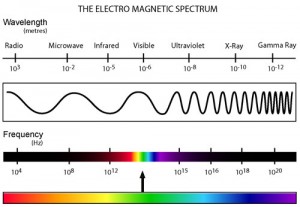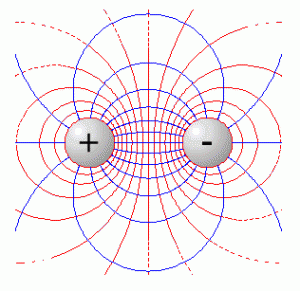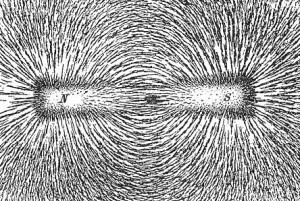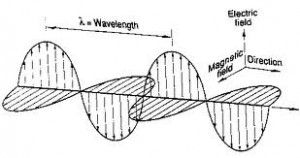What in the world is laser?
PART 1
[Disclaimer: The author does not own Figures 1-4, nor does he own Yoda, although he certainly wishes that he does.]
We use them to point at things in a slide presentation; snipers use them to point at heads ready to be shot. They make cool technologies possible, from CDs and grocery store barcode scanners to metal cutters. We often hear that they can cause blindness, but we also know that they are used in surgical methods to correct many vision problems. In science fiction movies they shoot out of space ships, one can engage in duels using swords made of them, and there are ships which can destroy entire planets using them. Laser beams — they are both boon and bane. But what in the world are they?

What in the world is laser?
The word laser stands for Light Amplification through the Stimulated Emission of Radiation. Originally, ‘laser’ is a term for the light emission mechanism that produces a beam of laser light (a laser beam). Today, however, ‘laser’ is used to denote devices that use the said mechanism to amplify light via stimulated emission of radiation.
Now, a laser beam is a beam of highly coherent, often monochromatic electromagnetic waves. Laser beams are produced when stimulation emission of electromagnetic waves amplifies light. If you think that these are quite a mouthful, then grieve not, for in this series we will explain what they mean.
But what is an electromagnetic wave?
An electromagnetic wave is an oscillation or vibration in the electromagnetic field in a certain region of space. All the colors of the rainbow our eyes can see are electromagnetic waves of different wavelengths. Among the colors of the rainbow, red has the longest wavelength while violet has the shortest. All the other colors have wavelengths between that of red and violet. The closer to red a color is the longer its wavelength, while the closer a color is to violet the shorter its wavelength. White light is the result of the combination of all the colors of the rainbow.
But the colors of the rainbow (or of the LGTB flag) comprise only a sliver of a segment in the electromagnetic spectrum. The electromagnetic spectrum is the continuum of all possible wavelengths (or frequencies) of electromagnetic waves, and the segment of the electromagnetic spectrum comprising the wavelengths visible to our eyes is called the visible light region. Other kinds of electromagnetic waves are invisible to our eyes, such as infrared rays, which have wavelengths longer than those of red light, and ultraviolet rays, which have wavelengths shorter than those of violet light. Radio waves, the kinds of electromagnetic waves we use to transmit radio signals, have wavelengths even longer than those of infrared light. X-rays and gamma rays, on the other hand, have wavelengths shorter than those of ultraviolet rays. (We can also describe electromagnetic waves using their frequency. Frequency is the inverse of wavelength, so that as wavelength becomes longer frequency decreases, and as frequency increases wavelength becomes shorter.)

But what is an electromagnetic field?
Let us start with electric fields and magnetic fields. An electric field is a force field created by a charged particle (such as an electron or an ion) or by an object with an excess of charged particles. A magnetic field, on the other hand, is a force field created by a piece of magnetic material (such as a bar magnet) or by a steady electric current. The electric field is a vector field specifying the electric force that will be experienced by a particle of unit charge if it were located at a specified point in space, while the magnetic field is a vector field specifying the magnetic force that will be experienced by a unit current if it were located at a specified point in space.
In the early 19th century, Michel Faraday (an English chap who had nothing better to do but study current-carrying wires and magnets) discovered that a changing magnetic field also creates an electric field. Then in the latter part of the same century, James Clerk Maxwell (another English chap who had nothing better to do than to make mathematical models out of other scientists’ observations) discovered that if the law of the conservation of charges is to be valid, then a changing electric field must also create a magnetic field. This latter discovery by Maxwell led to the famous Maxwell’s equations. It is hard to overstate the importance of Maxwell’s equations. The four equations of Maxwell are among the most important, if not the most important equations of physics.
One profound implication of Maxwell’s equations is that electricity and magnetism turn out to be two facets of the same phenomenon; this phenomenon is known electromagnetism. Because of Maxwell’s discovery, we know that an electric field and a magnetic field are just different manifestations of the same field, the electromagnetic field.
Another equally profound implication of Maxwell’s equations is that visible light is an electromagnetic wave. In short, light is just a vibration in the electromagnetic field in a certain region in space! This realization led to the discovery that there are a host of other electromagnetic waves, all of them invisible to the human eyes. As mentioned, the radio waves we use to transmit radio signals and the X-rays we use in medicine are, like the LGTB flag, just dancing electromagnetic fields.



To be continued.
Part 2: What do we mean by “highly coherent, usually monochromatic beam of electromagnetic waves”?
Part 3: How are laser beams produced?
[1] Hitz, Ewing and Hecht, Introduction to Laser Technology, 3rd ed. IEEE Press, 1998.
[2] Griffiths, Introduction to Electrodynamics. Prentice-Hall, 1999.
[3] Harris, Nonclassical Physics. Addison-Wesley, 1999.
[4] Ask a Mathematician/Ask a Physicist, http://www.askamathematician.com
[5] Coherence, http://electron9.phys.utk.edu/optics421/modules/m5/Coherence.htm


First! 😀
i hope to learn more about the nature of light from this article. i've been consuming info from the net about the nature of light but my non-physicist brain is having a hard time understanding some of it :S . genuinely interested in part 2 and 3.